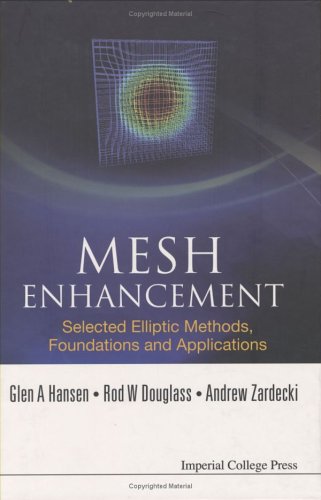- 2 402 202 книги
- Поиск
libcats.org







An Introduction to Modeling and Simulation of Particulate Flows
T. I. ZohdiThe relatively recent increase in computational power available for mathematical modeling and simulation raises the possibility that modern numerical methods can play a significant role in the analysis of complex particulate flows. This introductory monograph focuses on basic models and physically based computational solution strategies for the direct and rapid simulation of flowing particulate media. Its emphasis is primarily on fluidized dry particulate flows in which there is no significant interstitial fluid, although fully coupled fluid-particle systems are discussed as well. An introduction to basic computational methods for ascertaining optical responses of particulate systems also is included. The successful analysis of a wide range of applications requires the simulation of flowing particulate media that simultaneously involves near-field interaction and contact between particles in a thermally sensitive environment. These systems naturally occur in astrophysics and geophysics; powder processing pharmaceutical industries; bio-, micro- and nanotechnologies; and applications arising from the study of spray processes involving aerosols, sputtering, and epitaxy. Audience An Introduction to Modeling and Simulation of Particulate Flows is written for computational scientists, numerical analysts, and applied mathematicians and will be of interest to civil and mechanical engineers and materials scientists. It is also suitable for first-year graduate students in the applied sciences, engineering, and applied mathematics who have an interest in the computational analysis of complex particulate flows. Contents List of Figures; Preface; Chapter 1: Fundamentals; Chapter 2: Modeling of particulate flows; Chapter 3: Iterative solution schemes; Chapter 4: Representative numerical simulations; Chapter 5: Inverse problems/parameter identification; Chapter 6: Extensions to swarm-like systems; Chapter 7: Advanced particulate flow models; Chapter 8: Coupled particle/fluid interaction; Chapter 9: Simple optical scattering methods in particulate media; Chapter 10: Closing remarks; Appendix A. Basic (continuum) fluid mechanics; Appendix B. Scattering; Bibliography; Index
Популярные книги за неделю:

Проектирование и строительство. Дом, квартира, сад
Автор: Петер Нойферт, Автор: Людвиг Нефф
Размер книги: 20.83 Mb

Система упражнений по развитию способностей человека (Практическое пособие)
Автор: Петров Аркадий НаумовичКатегория: Путь к себе
Размер книги: 818 Kb

Сотворение мира (3-х томник)
Автор: Петров Аркадий НаумовичКатегория: Путь к себе
Размер книги: 817 Kb

Радиолюбительские схемы на ИС типа 555
Автор: Трейстер Р.Категория: Электротехника и связь
Размер книги: 13.64 Mb
Только что пользователи скачали эти книги:

Mesh Enhancement: Selected Elliptic Methods, Foundations and Applications
Автор: Glen A. Hansen, Автор: Rod W. Douglass, Автор: Andrew Zardecki
Размер книги: 9.02 Mb

Three Views on the New Testament Use of the Old Testament (Counterpoints: Bible and Theology)
Автор: Kenneth Berding, Автор: Jonathan Lunde, Автор: Stanley N. Gundry, Автор: Walter C. Kaiser Jr., Автор: Darrell L. Bock, Автор: Peter E. Enns
Размер книги: 25.69 Mb

Florence Nightingale at First Hand: Vision, Power, Legacy
Автор: Lynn McDonald
Размер книги: 1.34 Mb






